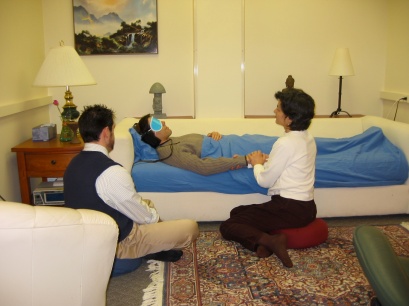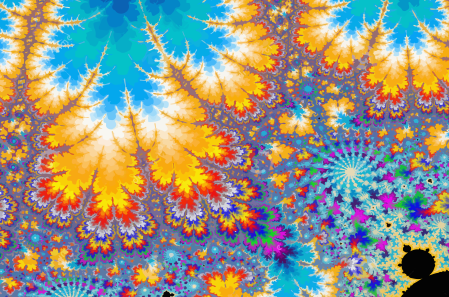Death is something we all have in common. Although we all think about death to different degrees and for different reasons, it’s something that ties us together. We can all empathise with a fear of death, even if most of us have not had to face it as starkly as others.
People suffering from life-threatening diseases have perhaps the most traumatic relationship with death. Knowing you have only months or weeks to live must produce an existential crisis of enormous intensity. In many patients, this can mean anxiety and depression 1, and can make the last part of their lives also one of the most distressing.

Unsurprisingly, psychiatrists and therapists have turned to the classic psychedelics, including LSD and psilocybin, as a potential salve for end-of-life anxiety. Psychiatrists have known for half a century that these psychedelics can provide a new perspective on life, and result in meaningful and spiritual experiences. Early studies from the 60s and 70s suggested that psychedelics could reduce end-of-life anxiety, and help terminal cancer patients come to terms with their death.
Now, researchers are starting to revisit the use of psychedelics in psychotherapy. A 2011 study recruited 12 terminal cancer patients with anxiety or stress disorders, and gave them two six-hour therapy sessions 2. On one session they were given a low dose of psilocybin (0.2mg/kg), on another an inactive placebo, two weeks apart. Before and after these sessions they were tested on several scales of depression, anxiety and stress. Compared to the placebo sessions, the therapy sessions with psilocybin reduced patient’s anxiety and depression scores, although the differences were not statistically significant.
Six months later, after both therapy sessions, depression and anxiety scores were significantly reduced. Although this can’t be directly attributed to the psilocybin (it’s possible the therapy alone resulted in these long-term improvements), the initial reductions in anxiety scores that psilocybin produced suggest that it had an important role.
Three years down the road, another research group, funded by MAPS, performed a similar study using LSD 3. Twelve participants with anxiety related to life-threatening diseases were given several psychotherapy sessions, either with a high dose of LSD (200ug) or an active placebo (20ug of LSD). Before and after the sessions, patients were tested on an anxiety scale. Patients on the active placebo showed a steady increase in anxiety scores in the two months after their therapy sessions, whereas patients on the high dose of LSD showed a statistically significant decrease in anxiety scores.

Typical psychedelic-assisted therapy session
After the initial therapy sessions and two-month follow-up, the patients in the active placebo group were given the chance to undergo psychotherapy sessions with the high dose of LSD (known as a cross-over design). This also resulted in a decrease in anxiety scores after two months, although this wasn’t statistically significant. Twelve months after all participants had completed the high-dose LSD therapy sessions, their anxiety scores were reduced compared to their scores before the therapy.
After this year-long study, participants were interviewed about their experience. Nearly 80% of patients reported a reduced fear of death, and nearly 70% reported an increased quality of life, as a result of their LSD-assisted therapy sessions 4.

Both of these studies share similar limitations; they have small participant numbers, are susceptible to confounding variables, and don’t have ideal controls. But neither reported any harm associated with psychedelics, when administered in a controlled, psychotherapeutic environment, and both showed improved anxiety scores following psychedelic-assisted therapy. They demonstrate the safety of psychedelics in a therapeutic environment, and lay a foundation on which researchers can begin to build more evidence for their effectiveness as a treatment for end-of-life anxiety.
If anyone in our society deserves all possible care and comfort, it’s people suffering from life-threatening disease. It seems very wrong to withhold potential palliative care from them, especially as we can all empathise with a fear of death. We should want to alleviate that fear wherever possible.
Editor: To end on a lighter note, it helps me to remember that we’ve all been dead for billions of years already before we were born – and it hasn’t inconvenienced any of us in the slightest!
References:
- Kolva et al (2011) Anxiety in terminally ill cancer patients. J Pain Symptom Management, 42(5):691-701
- Grob et al (2011) Pilot study of psilocybin treatment for anxiety in patients with advanced-stage cancer. Arch Gen Psychiatry, 68(1):71-78.
- Gasser et al (2014) Safety and efficacy of LSD-assisted psychotherapy for anxiety associated with life-threatening diseases. J Nerv Ment Dis, 202:513-520.
- Gasser et al (2015) LSD-assisted psychotherapy for anxiety associated with a life-threatening disease: a qualitative study of acute and sustained subjective effects. J Psychopharm, 29(1):57-68.


Hello,
I would like to re-publish my thread “Psychedelics and anxiety”, which is constantly updated, on thepsychedelicscientist.com. I cordially invite you to preview its content here:
http://www.bluelight.org/vb/threads/828200-Psychedelics-and-anxiety
I thought you might be interested.
Kindest regards,
Sherman Peabody
LikeLike